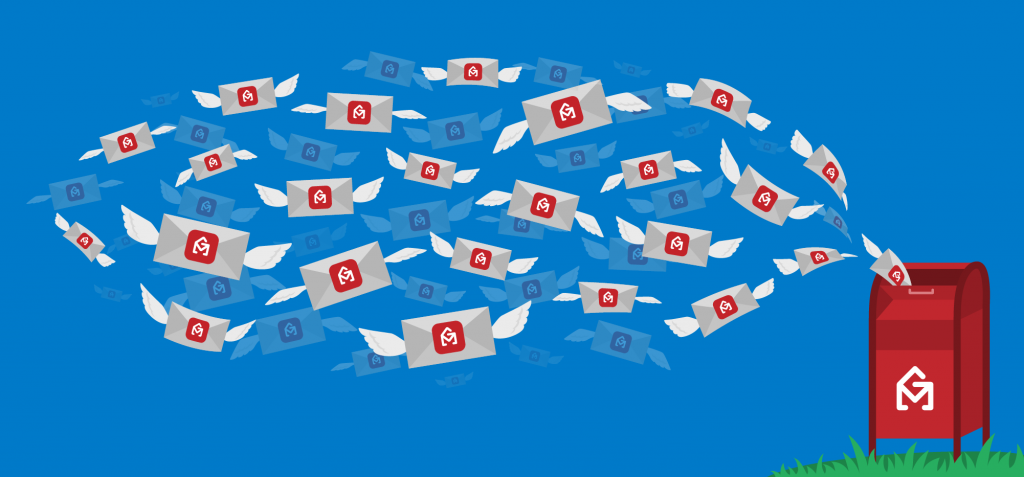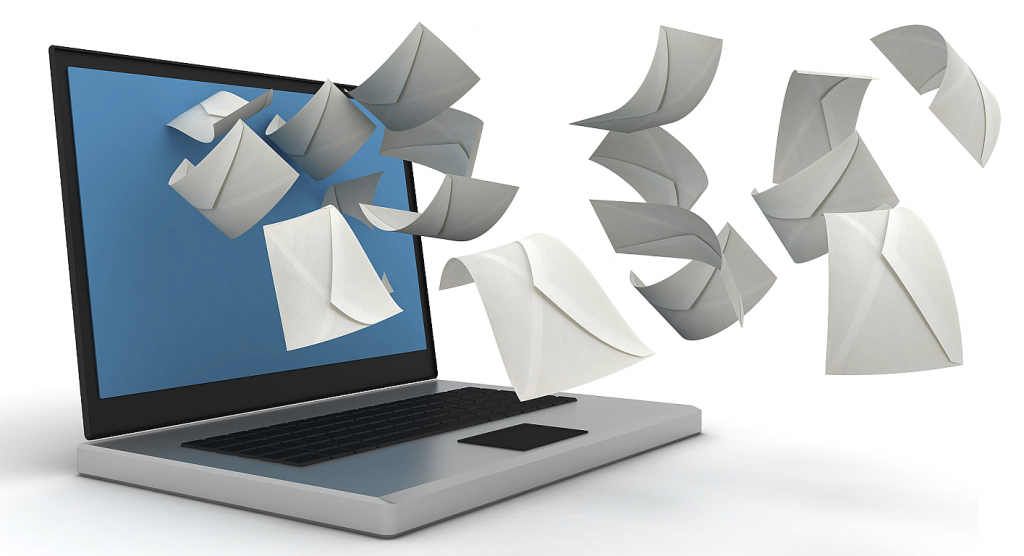 What would good email habits be worth to you? Are they even worth anything to you? Have you ever wondered how much emailing costs your company?
What would good email habits be worth to you? Are they even worth anything to you? Have you ever wondered how much emailing costs your company?
There was a time when emails were celebrated. That time is long gone even though some developing countries with overreliance on paper still view it as a boon. The most efficient operators in the world, though, have started avoiding emails now and with good reason.
What Is The Price Of Emailing?
 No, it’s not the same as the cost of your domain. It isn’t even the cost of the Gmail Business Suite. If you want to know the price of emailing, you should calculate the number of hours your employees spend emailing i.e. the number of hours spent writing, reading, and organising email messages. That is exactly what scientists from Loughborough and Deakin Universities did.
No, it’s not the same as the cost of your domain. It isn’t even the cost of the Gmail Business Suite. If you want to know the price of emailing, you should calculate the number of hours your employees spend emailing i.e. the number of hours spent writing, reading, and organising email messages. That is exactly what scientists from Loughborough and Deakin Universities did.
According to these researchers, the price of emailing is anything between $8,570 and $17,140 per employee per annum. There is no fixed amount because the cost of emailing depends on the size of the organisation. For instance, the minimum cost per employee per annum is for an organisation with a workforce of 3,000 individuals, while the top end of the range is for an organisation with 6,000 employees.
The methodology behind the study was simple in that the researchers studied four organisations before creating a formula to estimate the price of emailing. The formula included variables such as average salary, average reading time, average number of emails per day, and average interruption recovery time. The bottom line here is that emails have a price for an organisation depending upon its size.
Unfortunately, emailing is an integral part of business today and cannot be removed completely from the picture. However, it is still possible for businesses and individual professionals to proactively adopt good email habits that improve efficiency. Here are a few of these good email habits you can adopt.
Good Email Habits #1: Have a Dedicated Email Checking Time Slot
 Productivity experts say that the first hour of your workday is the most productive. Surprisingly and possibly foolishly, most of us tend to devote the first hour of our work days to checking and responding to emails. Not only this, we have this tendency to check our inboxes every time we get notifications. Because we’re slaves to notifications, we have to account for interruption recovery time in our work days too.
Productivity experts say that the first hour of your workday is the most productive. Surprisingly and possibly foolishly, most of us tend to devote the first hour of our work days to checking and responding to emails. Not only this, we have this tendency to check our inboxes every time we get notifications. Because we’re slaves to notifications, we have to account for interruption recovery time in our work days too.
The solution to the influence of notifications is to turn them off entirely and dedicate a specific time slot to your inbox. While this time slot can be anywhere in your day, we recommend the last hour of your workday. This is the least productive time of your work day and reading or responding to emails doesn’t require specialised skills. Those of you whose work especially depends on emails, of course, have the option of scheduling your inbox hour in the morning, in the afternoon, or even two to three times a day.
Good Email Habits #2: Focus On One Topic at a Time
 When it comes to writing emails, all of us tend to have the same strategy i.e. formulating emails according to the receiver. In other words, we send one email to a person, regardless of how many topics we need to correspond with them on. For example, a business development manager will often request payment for services rendered as well as try to upsell other products in the same email. Similarly, a CEO will often send a memo to his employees containing everything from appraisal results to training schedules.
When it comes to writing emails, all of us tend to have the same strategy i.e. formulating emails according to the receiver. In other words, we send one email to a person, regardless of how many topics we need to correspond with them on. For example, a business development manager will often request payment for services rendered as well as try to upsell other products in the same email. Similarly, a CEO will often send a memo to his employees containing everything from appraisal results to training schedules.
This isn’t good practice because most people tend to respond only after they have a response to all the items in the email. Combining multiple subjects causes a roadblock in the process where you don’t get a response to all your items just because one is stuck. This can slow down entire systems and campaigns simply because a single minor element may be stuck. The solution, as is obvious, is to structure your emails on the basis of topics. Therefore, even if you have to send two to three smaller emails to the same individual, it is better to do that then to send one extra-long email.
Good Email Habits #3: CTAs in Subject Lines
 One of the reasons why people combine multiple topics into a single email is that sending multiple emails to the same individual may result in confusion. People aren’t used to receiving multiple emails from the same individual at the same time. As a result, they may end up that some emails were sent by mistake or that the sender is pestering them.
One of the reasons why people combine multiple topics into a single email is that sending multiple emails to the same individual may result in confusion. People aren’t used to receiving multiple emails from the same individual at the same time. As a result, they may end up that some emails were sent by mistake or that the sender is pestering them.
In order to avoid this misunderstanding as well as use a little bit of behavioural psychology to get quick responses, you should use Call to Actions (CTAs) in your email subject lines. CTAs are nothing but prominent verbs that help the receiver decide what he needs to do with the email. More importantly, a subject line with a CTA or verb will help you focus your email content. This will further enhance communication between you and the recipient of your email.
Good Email Habits #4: Automated Email Actions Where Possible
 Virtually every email client has systems for automating basic actions that you may still be managing manually. For example, you may have signed up for newsletters or subscribed to certain services and are receiving emails from them. It is unlikely that you get to read those emails often. In fact, you most probably leave them in your inbox to be dealt with later.
Virtually every email client has systems for automating basic actions that you may still be managing manually. For example, you may have signed up for newsletters or subscribed to certain services and are receiving emails from them. It is unlikely that you get to read those emails often. In fact, you most probably leave them in your inbox to be dealt with later.
This leads to your inbox becoming cluttered. Keeping your inbox clean is something that you should aspire to because it will reduce the amount of time you spend looking through it. The best way of keeping inboxes clean is with automated labels and filters. It is possible for you set things up in a way where incoming emails receive a label and get moved into their appropriate folders automatically.
Good Email Habits #5: Template Responses
 One of the easiest and simplest ways of cutting down the time you spend emailing people is creating template responses. Templates are just that – responses that need to be sent repeatedly to people. For example, a thank you email can be turned into a template so that you don’t have to write the body again and again.
One of the easiest and simplest ways of cutting down the time you spend emailing people is creating template responses. Templates are just that – responses that need to be sent repeatedly to people. For example, a thank you email can be turned into a template so that you don’t have to write the body again and again.
Depending on the nature of your profession and industry, you may be able to create multiple template responses, cutting down your email writing time drastically. The trick is to be aware of what you’re writing for the next week. Every time you write an email, you should try to remember whether you’ve written something similar before or whether you’ll be writing something similar in the future. If you have or think you will, then your email is a good candidate to be turned into a template.
Just imagine how much time you can save by creating templates for multiple messages.
Good Email Habits #6: Don’t Let Email Threads Exceed Two Responses
 Emails have a tendency to suck you in. This is especially true for emails that are directed at more than one or two individuals. It is even more accurate when everyone in the email thread decides to respond to the email. Typically, if an email thread is exceeding two responses from your end, you can be sure that the exercise is not successful.
Emails have a tendency to suck you in. This is especially true for emails that are directed at more than one or two individuals. It is even more accurate when everyone in the email thread decides to respond to the email. Typically, if an email thread is exceeding two responses from your end, you can be sure that the exercise is not successful.
In fact, if you’ve received two responses from your recipient and the issue is still cloudy or unresolved then you need to stop emailing. In such a scenario, you should simply get on chat or call the individual. Real-time communication will probably serve you far better than emails; irrespective of how detailed you make your responses.
Leave a Reply